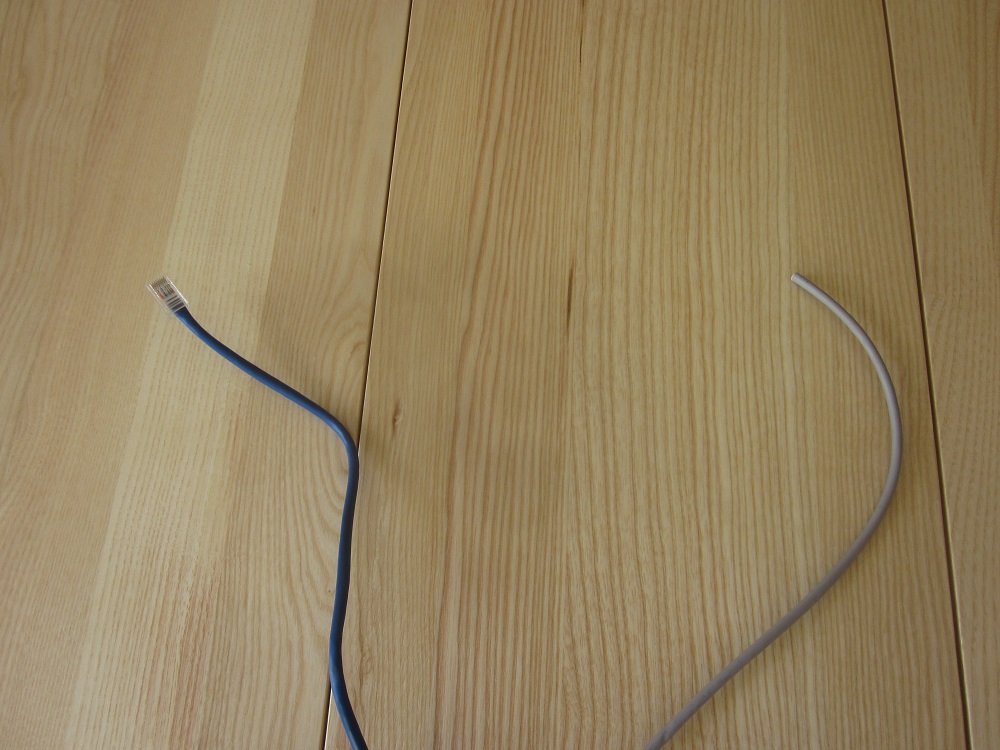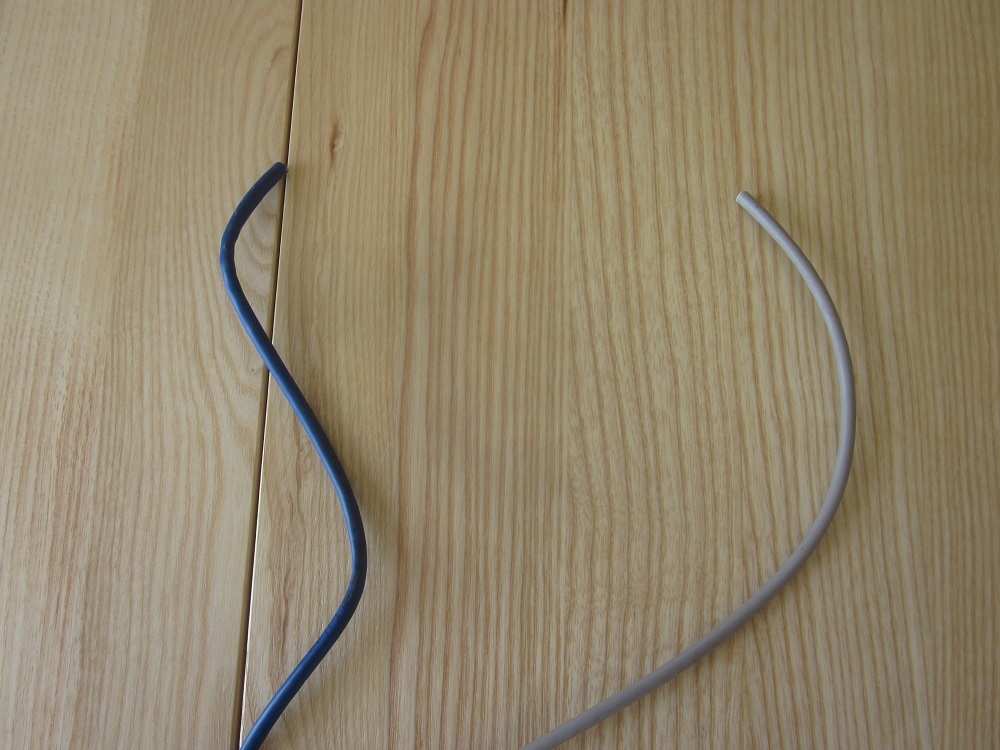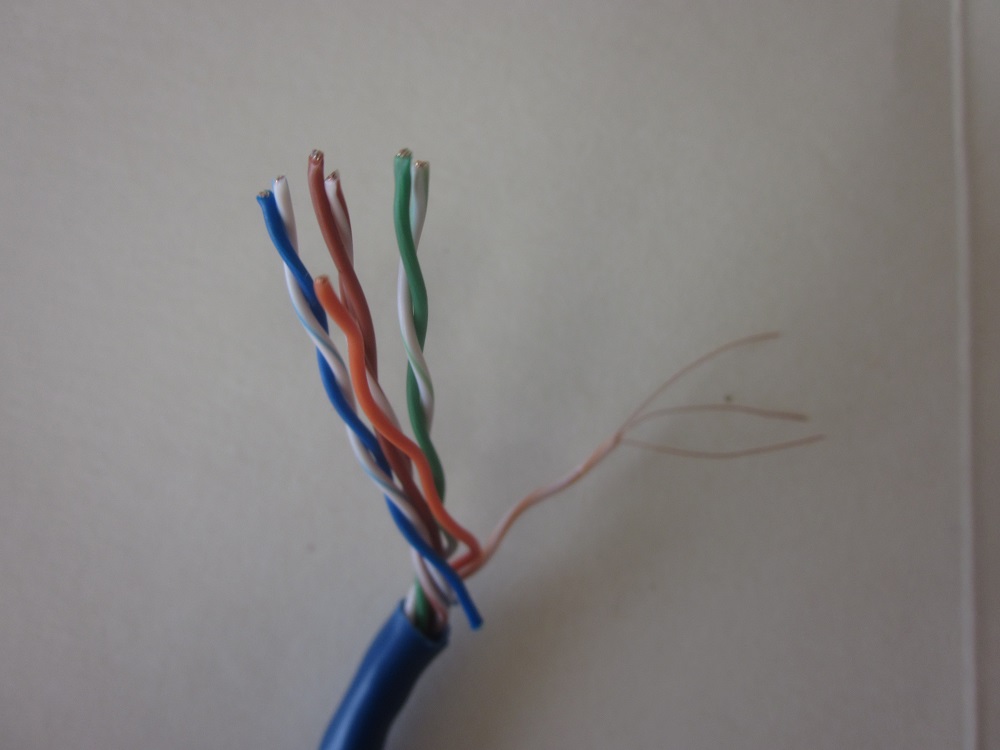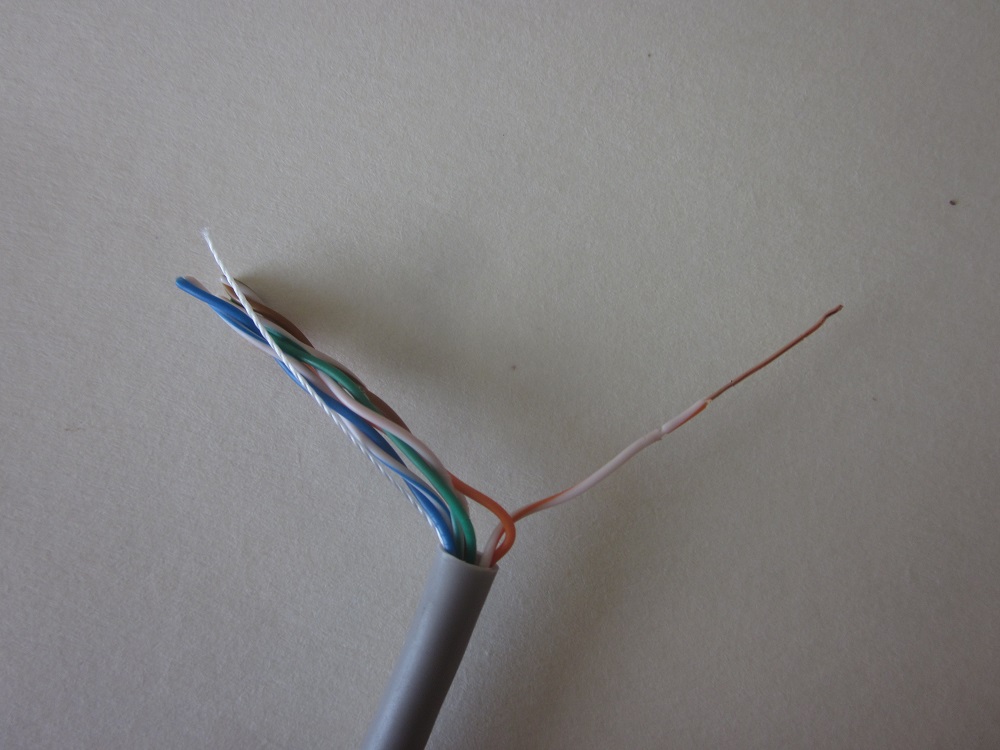When you set up a wired network using Ethernet cables (e.g. Cat5e or Cat6), there are 2 types: solid and stranded. The rule of thumb is that you use solid cables when they’re not going to move, e.g. between a wall socket and a patch panel. You use stranded cables when they will move, e.g. between a desktop PC and a wall socket. Solid cables are better over long distances, while stranded cables are a bit more flexible and they’ll probably survive being run over by an office chair.
However, what’s the actual difference between those types? Arguably, they’re both solid, in the sense that they’re not liquid or gas. They also both contain thinner wires inside (twisted pairs). The difference applies to the copper wire once you remove all the plastic sheaths.
Here are 2 cables. The blue cable on the left is a stranded patch cable, and the grey cable on the right came from a roll of solid cable.
Since the blue cable has a plug on the end, that’s a big hint that it’s stranded. However, if you’re making your own patch cables then you could buy a big roll of stranded cable, then cut off the length that you need. If you’ve found/inherited a roll of cable like that, you might need to identify it. So, I’ve cut off the network plug to make the cables look more similar.
Next, I removed the outer sheath of plastic from both cables. (I didn’t strip the entire length of the cable, just a few cm off the end.)
As you can see, both cables have 4 pairs of thinner plastic wires, where each pair is twisted together:
- Blue, blue/white.
- Brown, brown/white.
- Green, green/white.
- Orange, orange/white.
This is why both types of cable are classed as UTP (Unshielded Twisted Pair). The grey cable also has a piece of thread inside; you can use that to help you remove the outer sheath.
Pick one of those pairs at random, then untwist it and pick one of the thinner wires from that pair. In this case, I’m looking at the orange/white wire inside each cable.
Strip off the plastic from this wire:
I’ve swapped to a different background and zoomed in on each cable so that you can see more detail. The blue cable has several thin copper wires (strands), whereas the grey cable has one solid copper wire.
So, that’s the difference between solid and stranded. It makes logical sense, but I think it’s useful to see it and understand it rather than just memorising definitions.







Leave a Reply